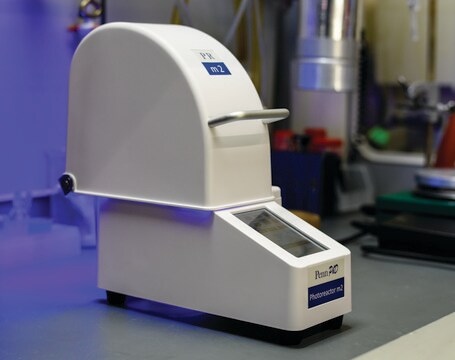901163
trans-Bis(triethylphosphine)(2,4,6-trimethylphenyl)nickel(II) bromide
≥95%
Synonym(s):
trans-(PEt3)2Ni(mesityl)Br
About This Item
Recommended Products
assay
≥95%
form
powder or solid
reaction suitability
core: nickel
reaction type: Cross Couplings
reagent type: catalyst
mp
159-164 °C
SMILES string
Br[Ni](C1=C(C)C=C(C)C=C1C)(P(CC)(CC)CC)P(CC)(CC)CC
Application
Other Notes
Legal Information
Related product
Storage Class
4.1B - Flammable solid hazardous materials
wgk_germany
WGK 3
flash_point_c
Not applicable
Certificates of Analysis (COA)
Search for Certificates of Analysis (COA) by entering the products Lot/Batch Number. Lot and Batch Numbers can be found on a product’s label following the words ‘Lot’ or ‘Batch’.
Already Own This Product?
Find documentation for the products that you have recently purchased in the Document Library.
Articles
The Jamison group has developed a library of bench-stable phosphine-containing nickel(II) precatalysts that are converted into active catalysts in situ.
Nickel transition metal and its complexes can be used as a catalyst in many synthetic transformations, like oxidative addition, C-H activation, reductive elimination, oxidative cyclization, oligomerization, and in cross-coupling reactions.
Related Content
Research in the Jamison group is centered on the development of new reactions and technologies for organic synthesis. Towards these themes, the group has pioneered a number of air-stable nickel precatalysts supported by phosphines and N-heterocyclic carbenes that are readily converted to the active catalyst in situ.
Our team of scientists has experience in all areas of research including Life Science, Material Science, Chemical Synthesis, Chromatography, Analytical and many others.
Contact Technical Service![(Ir[dF(CF3)ppy]2(dtbpy))PF6](/deepweb/assets/sigmaaldrich/product/structures/982/913/02dd8ddd-6deb-40a0-ab9b-07b18f1abb09/640/02dd8ddd-6deb-40a0-ab9b-07b18f1abb09.png)
![[Ir(dtbbpy)(ppy)2]PF6](/deepweb/assets/sigmaaldrich/product/structures/158/329/2544d673-d267-4aa1-8f46-2652aad4bfa0/640/2544d673-d267-4aa1-8f46-2652aad4bfa0.png)





![[Ir{dFCF3ppy}2(bpy)]PF6](/deepweb/assets/sigmaaldrich/product/structures/180/924/79119ac4-7d62-429d-b23d-a14c012c6050/640/79119ac4-7d62-429d-b23d-a14c012c6050.png)

![[Ir(dFppy)2(dtbbpy)]PF6](/deepweb/assets/sigmaaldrich/product/structures/258/715/c8fe85d5-be71-4ff1-849b-a20766636770/640/c8fe85d5-be71-4ff1-849b-a20766636770.png)